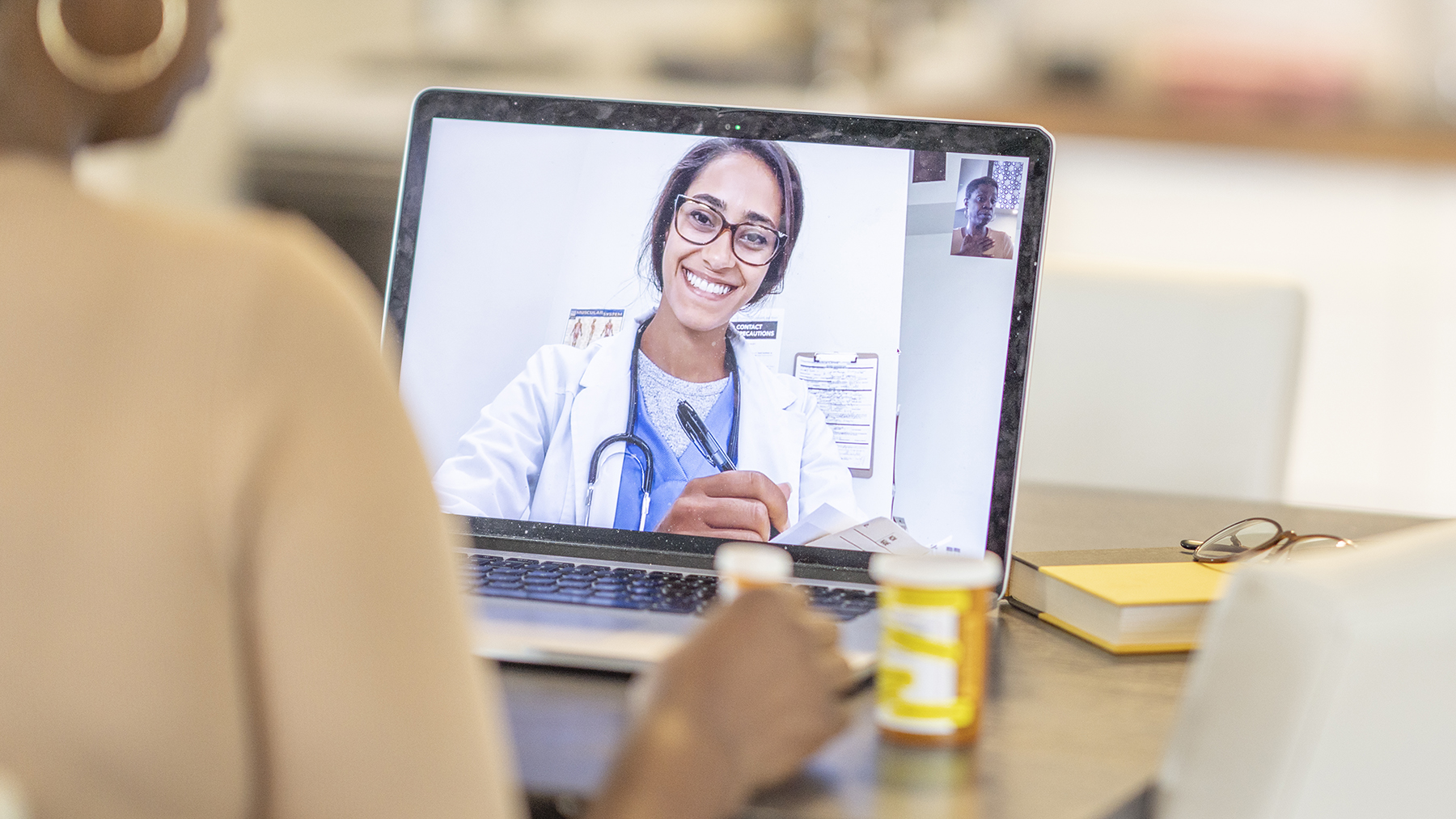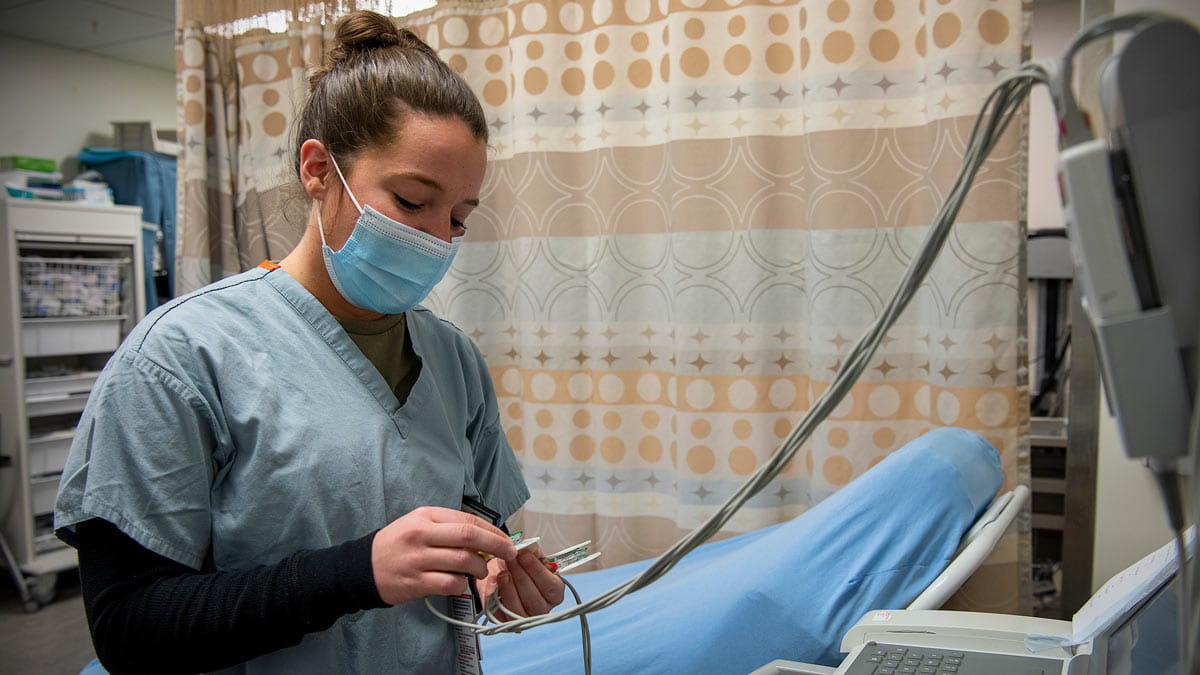The top 5 questions patients ask our doctors about COVID-19 vaccines

We asked primary care providers in The Ohio State University Wexner Medical Center’s Department of Family and Community Medicine to share what they’re asked most when it comes to the COVID-19 vaccine. Their patients’ top five questions, answered:
1. When, where and how can I get the COVID-19 vaccine?
The answer to this may depend on your care provider, your occupation, your age, where you live and your underlying health conditions. The CDC gave broad guidelines for how to allocate and distribute COVID-19 vaccines, but individual state governments were able to make their own decisions on how they would be rolled out. We’ll share some of the answers that pertain to Ohio.
Phase 1A
According to Ohio’s vaccine distribution plan, you should have already received notification about vaccine eligibility from your facility if you’re a resident, patient or staff member of a nursing home, assisted living facility or state psychiatric facility. You should have already received information from your employer if you are an EMS responder, health care worker or essential employee routinely involved in care of COVID-19 patients.
Phase 1B
Ohio’s Phase 1B distribution is scheduled to begin Jan. 19, starting with Ohioans 80 and older. The week of Jan. 25, vaccination scheduling opens for Ohioans 75 and older, and those with severe congenital or developmental disorders. The week of Feb. 1, vaccination will be available to Ohioans 70 and older, as well as employees of K-12 schools that wish to remain or return to in-person or hybrid models. The week of Feb. 8, vaccination opens to Ohioans 65 years and older.
Later phases
If you’re an Ohioan and don’t fall into any of the categories mentioned above, you’ll likely be eligible for the COVID-19 vaccine sometime after the week of Feb. 8.
Ohio State patients
If you’re a patient at Ohio State (meaning you’ve seen an Ohio State provider within the past three years), you’ll receive notification via email, phone call and mail as soon as you are eligible to schedule your vaccination appointment at the Schottenstein Center in Columbus. Scheduling is done through Ohio State MyChart. Visit this page to learn more about vaccination at Ohio State and how to schedule those appointments.
Other Ohioans
For Ohioans who are not Ohio State Wexner Medical Center patients, vaccine registration and administration will vary by your health care provider and potentially where you live. Beginning at 8 a.m. on Friday, Jan. 15, the State of Ohio will launch a tool at coronavirus.ohio.gov to help Ohioans find health care providers who can administer the COVID-19 vaccine in their ZIP code.
Your primary care provider also likely will contact you with information on how you’ll be notified of vaccine availability, but you can also keep up with the latest information through the Ohio Department of Health as well as your county and/or city health departments. Many in the Columbus area can start with information from Franklin County Public Health.
2. What side effects should we anticipate with the COVID-19 vaccine?
Most side effects we’re seeing so far are mild and have gone away after 24 or 48 hours.
It’s natural and expected for the body to have an immune response to a vaccine—it means your body is creating those antibodies and doing what the vaccine was created to do. Some people in the vaccine clinical trials have experienced side effects that include injection site pain or redness, fatigue, muscle/joint pain and headache.
Side effects were more frequently reported after the second dose.
Just as you would with other vaccines, those who are immunized will be provided information about the vaccine’s risks and benefits, what to do in the case of an adverse reaction and where to find additional information.
A copy of the FDA’s emergency use authorization will be provided at the appointment, as well as a vaccine information sheet (VIS), as soon as it’s available.
If you experience common side effects from the vaccine, it’s still necessary to receive the second dose for the vaccine to be effective.
If you have severe allergies and/or have experienced an allergic reaction to a vaccine in the past, talk with your doctor about the ingredients of this vaccine and whether the COVID-19 vaccine is safe for you.
3. Is it safe to get the vaccine while pregnant or breastfeeding/nursing?
The manufacturers that are testing the vaccines in clinical trials have so far not included pregnant women or women who are breastfeeding, so there are currently no data available to inform vaccine-associated risks in pregnancy, on the breastfed infant, or with milk production/excretion. However...
- There is nothing to indicate that the vaccine is unsafe for pregnant people at this time.
- Developmental and reproductive toxicity (DART) studies are ongoing, and vaccine studies in pregnant individuals are planned.
The American College of Obstetricians and Gynecologists recommends that COVID-19 vaccines should not be withheld from pregnant and lactating individuals who meet criteria for vaccination based on ACIP-recommended priority groups, such as health care personnel.
A conversation with your health care provider based on your personal situation and COVID-19 risk factors may help you make a decision in your individual situation.
At Ohio State vaccination sites, pregnancy testing is available free of charge for people who are considering the vaccine and are capable of becoming pregnant.
4. I already had COVID-19. Should I get the vaccine? Should I wait to get it?
It’s still recommended that you get a COVID-19 vaccine even if you’ve had COVID-19. That’s because research so far shows that the antibodies produced after someone gets COVID-19 (what we call “natural immunity”) are fewer than those the body produces after getting a vaccine.
If you are currently quarantined because of COVID-19 or COVID-19 exposure, you should wait until after the quarantine period to receive your vaccine.
In this blog post, Ohio State infectious disease specialist Carlos Malvestutto, MD, explains more about how this works.
5. COVID-19 vaccines were developed in record time. Are they safe?
It’s important to note that while the currently available COVID-19 vaccines were developed faster than ever, the mRNA vaccine technology template that they use has been studied and refined for decades. You can learn more about how mRNA vaccines work in this blog post.
The vaccines also are deemed safe based on a rigorous evaluation of currently available scientific evidence. If the available scientific evidence changes or if new information becomes available, the authorization for its use can be adapted.
The Pfizer vaccine study enrolled 43,538 participants, with 42% having diverse ethnic backgrounds. No serious safety concerns were observed. The only Grade 3 (severe) adverse events greater than or equal to 2% in frequency were fatigue (3.8%) and headache (2%).
The Moderna vaccine study enrolled 30,000 participants, with 37% having diverse backgrounds. No serious safety concerns were observed. The majority of adverse events were mild or moderate in severity. Grade 3 (severe) events included injection site pain (2.7%), fatigue (9.7%), muscle pain or soreness (8.9%), joint pain (5.2%), headache (4.5%), pain (4.1%) and redness at the injection site (2%).
All vaccine trials have scheduled monitoring reviews, typically by an independent group known as a Data and Safety Monitoring Board, which routinely assesses safety or can be convened quickly to review any unanticipated adverse events.




